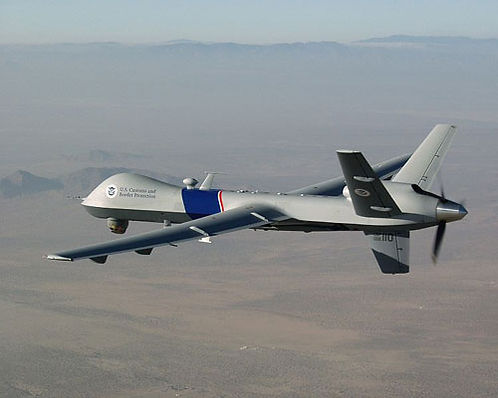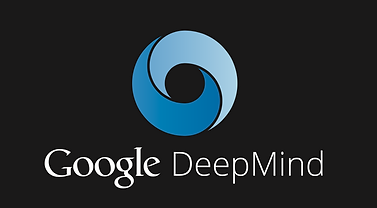Types of A.I. In Our World
Although we haven’t reached a time where Artificial Intelligence is gaining all this information and has become super knowing; we have found to use forms of Artificial Intelligence in different applications in our society. If we start with the financial aspect, it was first seen that Artificial Intelligence can be used for financial applications when in August of 2001; robots beat humans in a simulated financial trading competition. Since then Banks have used Artificial Intelligence to organize operations, invest in stocks, and manage properties. Financial Institutions have long used A.I. neural network systems to detect changes or claims outside of the norm, flagging these for human investigation. Artificial Intelligence applications have even reached to hospitals and the fields of medicine where medical clinics use artificial intelligent systems to organize bed schedules, make staff rotations, and provide medical information and other important tasks. Artificial neural networks are used as clinical decision support systems for medical diagnosis, such as in concept processing technology in EMR software. A lot of Artificial Intelligent robots have been used in many heavy industries. They often give jobs to A.I. robots that are considered too dangerous to humans. Robots have proven effective in jobs that are very repetitive which may lead to mistakes or accidents due to lapse in concentration in humans. Japan is the leader in using and producing A.I. robots in the world. In 1999, 1,700,000 robots were being used worldwide. Although most of us would rather speak to a human operator or human customer service, Artificial intelligence is being used as an application for online and telephone customer service. Speech recognition is a form of Artificial Intelligence which is used in call centers. Computers use natural language processing to allow better customer handling. One application of Artificial Intelligence that tends to get looked over is the use of A.I. in video games. Artificial Intelligence is used as opponents or possibly teammates. The actions committed by those opponents / teammates are responsive to what the human does while playing the game. There are even games where the A.I. opponents begin to learn the player’s constant moves and those moves tend to become less effective. Artificial Intelligent directors decide where enemies spawn and how maps are laid out to be more, or less challenging at various point of play.
An example of a literal device of Artificial Intelligence is the Roomba. This automatic vacuum can actually learn and map the logistics of a living area. It learns these coordinates by hitting the walls and furniture of the home. Once the vacuum has mapped the rooms, it can clean the rooms without hitting any obstacles. Voice recognition systems that are available in most car and cell phones are another example of Artificial Intelligence. Modern voice recognition systems learn commands based on the users voice, and then learn to accept commands based on that pattern. Chat bots are another form of Artificial Intelligence. They are able to learn and ask questions based on dialog with humans. These have limited intelligence because they only learn from the conversations they have with humans.
So as stated before, we have not reached a time of all knowing Artificial Intelligence. But Artificial Intelligence is growing and is becoming a part of our everyday lives.
A.I. In Developing Countries
By 2008 the USA had more robots in Iraq than allied troops (about 9,000). Also, several prominent scientists began publicly working on the problem of making robots ethical. The problem here is not the robots taking over the world, but that some people want to pretend that robots are responsible for themselves. In fact, robots belong to us. People, governments and companies build, own and program robots. Whoever owns and operates a robot is responsible for what it does. As wars become increasingly automated, we must ask ourselves how far we want to delegate responsibility to machines. Thanks to the U.S.'s use of drones, more than 70 other countries have acquired the technology in a new arms race. It is simply blinkered to think that they will not follow suit with autonomous weapons.
Most data analyses and research thus far have concentrated on developed countries. Yet, a growing community of computer scientists is calling for new applications that would harness these data-analysis methods to improve the lives of people in developing nations. Machine learning and artificial intelligence, they say, are perfectly poised to promote socioeconomic development, respond more effectively to natural disasters, expand access to health care, and improve the quality of education. Now, thanks to the efforts of Eric Horvitz, a renowned scientist at Microsoft Research, and Nathan Eagle, a researcher who lives in Kenya and holds faculty appointments at the Massachusetts Institute of Technology (MIT) Media Lab and Northeastern University, a small but diverse group of computer scientists is banding together to share ideas and information, and to define itself as a community.

Who Funds A.I. Research?
What we know is that the very biggest tech companies have been pouring money into artificial intelligence within the last year. Back in January Google bought the UK artificial intelligence firm Deep Mind for 400 million dollars. Only a month earlier, Google had bought the innovative robotics firm Boston Dynamics. Facebook is in the game as well having also in December 2013 created a massive lab devoted to artificial intelligence. The Chinese internet giant Baidu, with its own AI lab, recently snagged the artificial intelligence researcher Andrew Ng whose work for Google included the breakthrough of creating a program that could teach itself to recognize pictures of cats on the Internet. The National Science Foundation is also a great contributor when it comes to the advancement of Artificial Intelligence. And investors clearly gained interest in Artificial Intelligence through 2014 pouring $309M into Artificial Intelligence startups across more than 40 deals.
What is Google up to?
Last Year Google invested about an estimated $400 million for a little-know artificial intelligence Company called DeepMind. DeepMind produced its own software and it utilizes two Artificial Intelligence techniques. Deep-Learning techniques are already widely used at Google, and also at companies such as Facebook and Microsoft. They help with perception. It helps an android understand what you’re saying, and Facebook knows whose photo you just uploaded by using facial recognition. But until now, nobody has really matched Google’s success at merging deep learning with reinforcement learning. By merging these two techniques, Google has built a general learning algorithm that should be applicable to many other tasks, as stated Koray Kavukcuoglu, a Google Researcher. But as previously stated, there are many people who are skeptics to the advancements of Artificial Intelligence. Google’s Artificial Intelligence researchers believe that there are “more urgent matters than the potential destruction of humanity at the hands of super intelligent machines and that anyone talking about A.I. destroying us is being preposterous.” There was an interesting simulation shown to the public about DeepMind’s learning algorithm. The system played some Atari games against a human player. In the first game the machine was not very good at playing. However, at around the 100th game the system began to make errors rarely. This was interesting because instead of having to teach the system how to play the game, it began to learn to transfer knowledge learned about the game over into the next game and the machine became more and more intelligent. Many people continued the skepticism of a self-learning system, but according to the Wall Street journal, Google has created an ethics board; which is a board of people from many different scientific backgrounds who make sure that DeepMind’s A.I. remains safe and legal. However, Google brings more skepticism on board because they never reveal the names of the people on this board; which makes us a general public wonder why they are hiding this information.

Computer Science Involvement
Artificial Intelligence is very interdisciplinary, in which there are many different departments of study that each play an individual role in the research and study of how Artificial Intelligence works and how we can implement it. The Computer Science and Artificial Intelligence laboratory – also known as CSAIL – is the largest research laboratory at MIT and one of the world’s most important centers of information technology research. With 900 members and more than 100 principle investigators coming from eight different departments, CSAIL includes over 50 research groups that are split into three different areas that focus on a specific part of Artificial Intelligence. Those three different areas are Artificial Intelligence, systems, and theory. Each group is composed of faculty principle investigators, graduate and undergraduate students and postdocs, and also research staff. Lab members conduct research in almost every aspect of computer science, including Artificial Intelligence. These research groups are supported by grants from the United State government agencies such as the Defense Advanced Research Project Agency, NASA, the National Institutes of Health, the National Science Foundation and others; as well as international corporate sponsors such as Boeing, Cisco, DuPont, Microsoft, Nokia, NTT, Pfizer, Quanta, SAP, Shell, and Toyota. As you can see, CSAIL is getting a lot of funds to continue to researching Artificial Intelligence in the hopes that the knowledge of A.I. can expand and speed up the process of creating full functioning Artificially Intelligent systems.
